When you visit Fort Kochi in search of art, soak in some history as well. The town’s earliest colonial settlers, the Portuguese, arrived in 1503, followed by the Dutch in 1663, and then the British in 1795, who left vestiges of their culture, languages and history. But the invaders left more than just intangible heritage. Many of the buildings they built survive to this day, renovated into luxury boutique hotels that let you delight in their historical relevance and architectural splendour.
With the sixth edition of the Kochi Muziris Biennale set to open in Fort Kochi in December, here are hotels with an ancestry of over a century that you can check into.
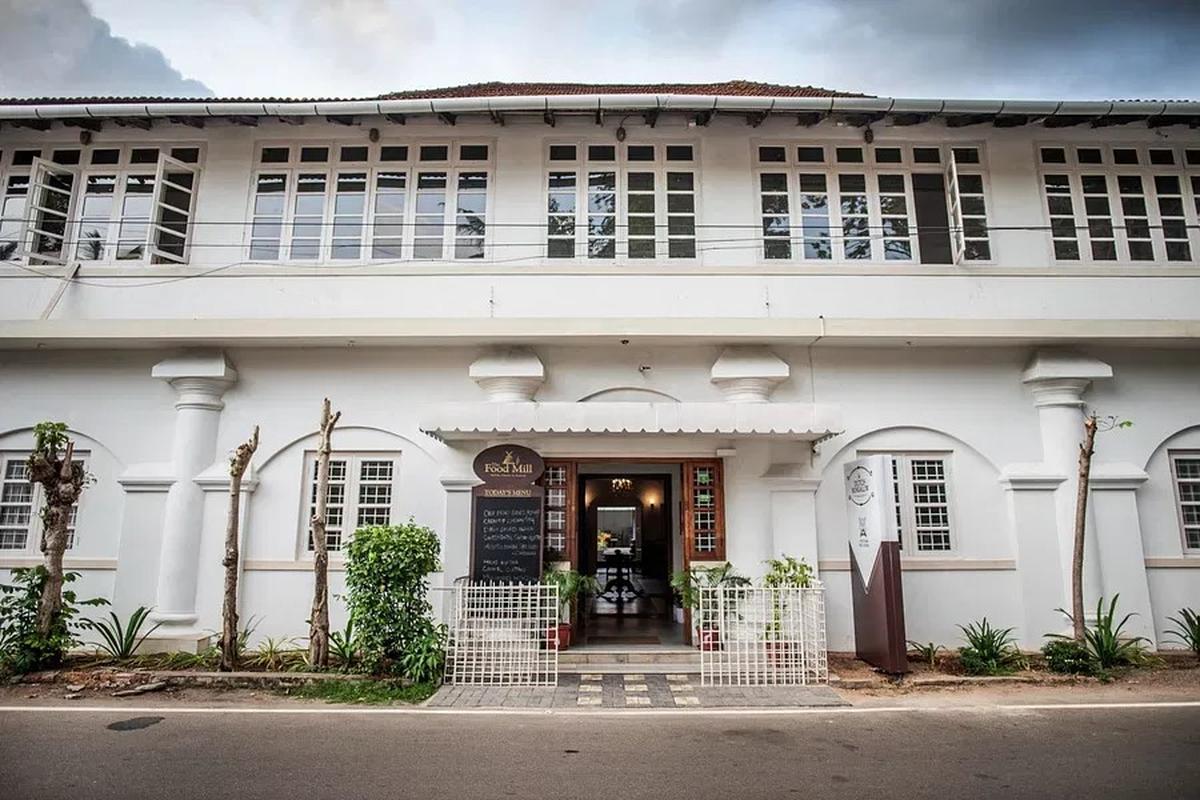
Abad Dutch Bungalow
| Photo Credit:
Special Arrangement
Abad Dutch Bungalow, 1668
People in Fort Kochi know this building as the Kannadi Malika (palace of glass). This ancient majestic bungalow, built by the Dutch East India Company, is now a boutique heritage hotel that still retains the legacy of its past. The British took over the property in 1796 for naval use. And in 1874, it went into private ownership. With its spacious rooms, high ceilings and wooden columns, the building offers a direct link to the past. The pool-side restaurant serves a combination of local and international cuisines with a special focus on seafood. Try the prawn cocktail, prawns in tangy cocktail sauce, served on a bed of shredded lettuce. The seafood platter, a best seller here, is worth trying.
For reservations, mail reservations@abadhotels.com or call 0484 4144000
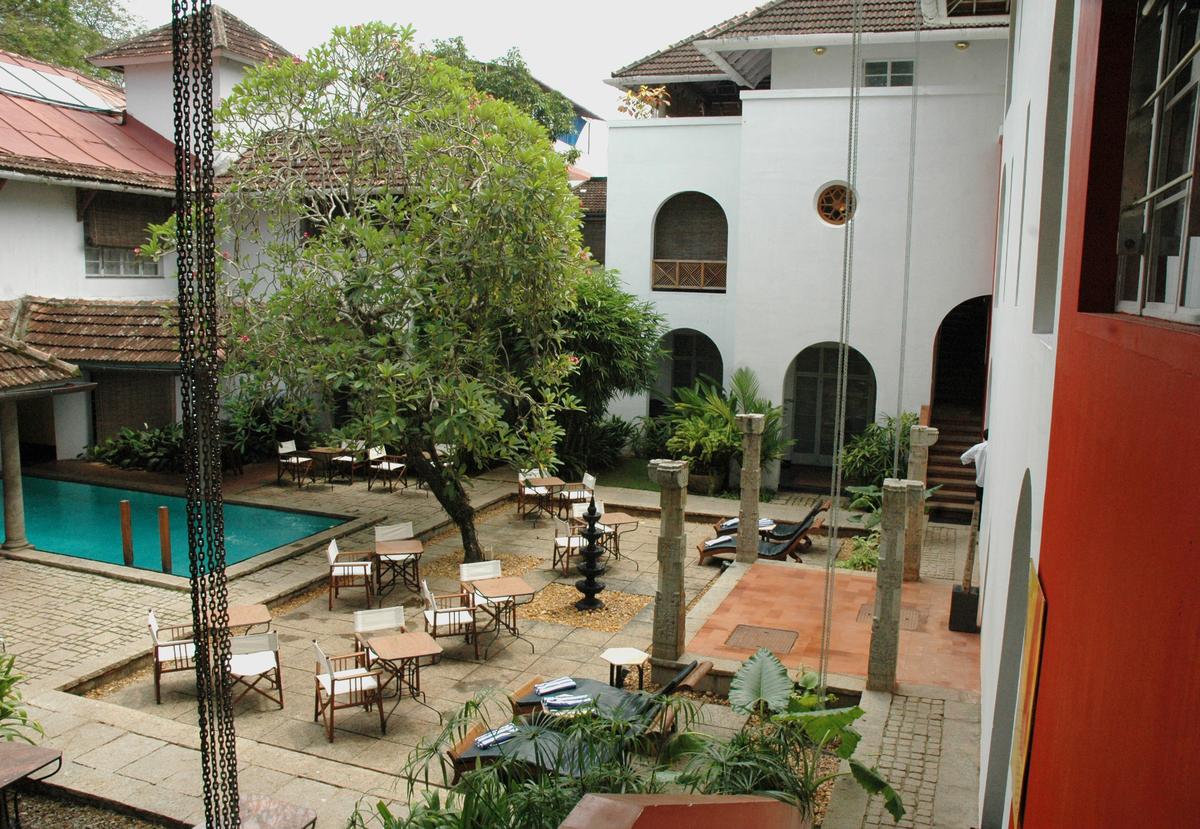
The courtyard of The Malabar House
| Photo Credit:
VIBHU H
The Malabar House, 1755
At The Malabar House, take in the sun-dappled courtyard, the early morning bird song and the colourful stories of erstwhile Fort Cochin. The history of the building dates back to 1755 – when a Dutch person, Jan Herman Clausing bought it. Later, it changed hands, owned by spice and tea traders, bankers. In 1997, a German national, Joerg Drechsel, bought the property and converted it to a boutique heritage hotel. The colonial-character has been retained, with modern elements added for the comfort of the guests. Out of the 17 individually-designed rooms, some offer a view of the expansive Parade Ground. Plan candle light dinners at the patio with live music, depending on weather. The restaurant serves local and Mediterranean-influenced food. However, the seafood platter is a must try. It includes prawns, lobster, fish, squid, and more served with a side of boiled rice and vegetables.
For reservations, call 98466 69999 or mail reservations@malabarescapes.com
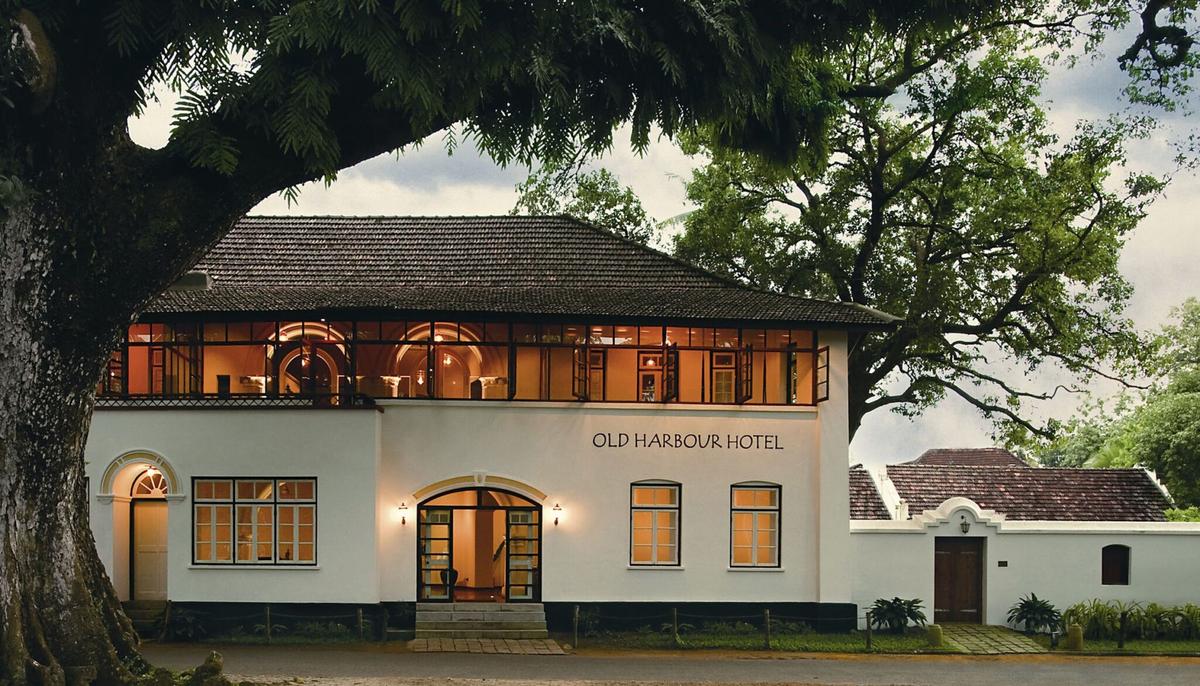
Old Harbour Hotel
| Photo Credit:
Special Arrangement
Old Harbour Hotel, 1788
With its white walls, tiled roof and large windows that open out to the tree-covered Tower Road, in Fort Kochi, this building is a reminder that the expression ‘old world charm’ isn’t just cliche. The 300-year-old Dutch mansion with Portuguese influences was built by tea broking firm Carritt Moran and Company and later became the residence of the tea brokers. It was converted into a heritage hotel, which was later acquired by Kochi-based entrepreneur Edgar Pinto, who renovated it into a boutique hotel along with Swiss German architect Karl Damschen. A garden, a pool and a view of the historic Chinese nets complete the picture. And a curated collection of art and antiques add to the experience. At the restaurant, do try their stir-fried crab, in both continental and Kerala styles, stuffed in the shell and served with thoran (stir-fried vegetable).
For reservations, WhatsApp 9847927297
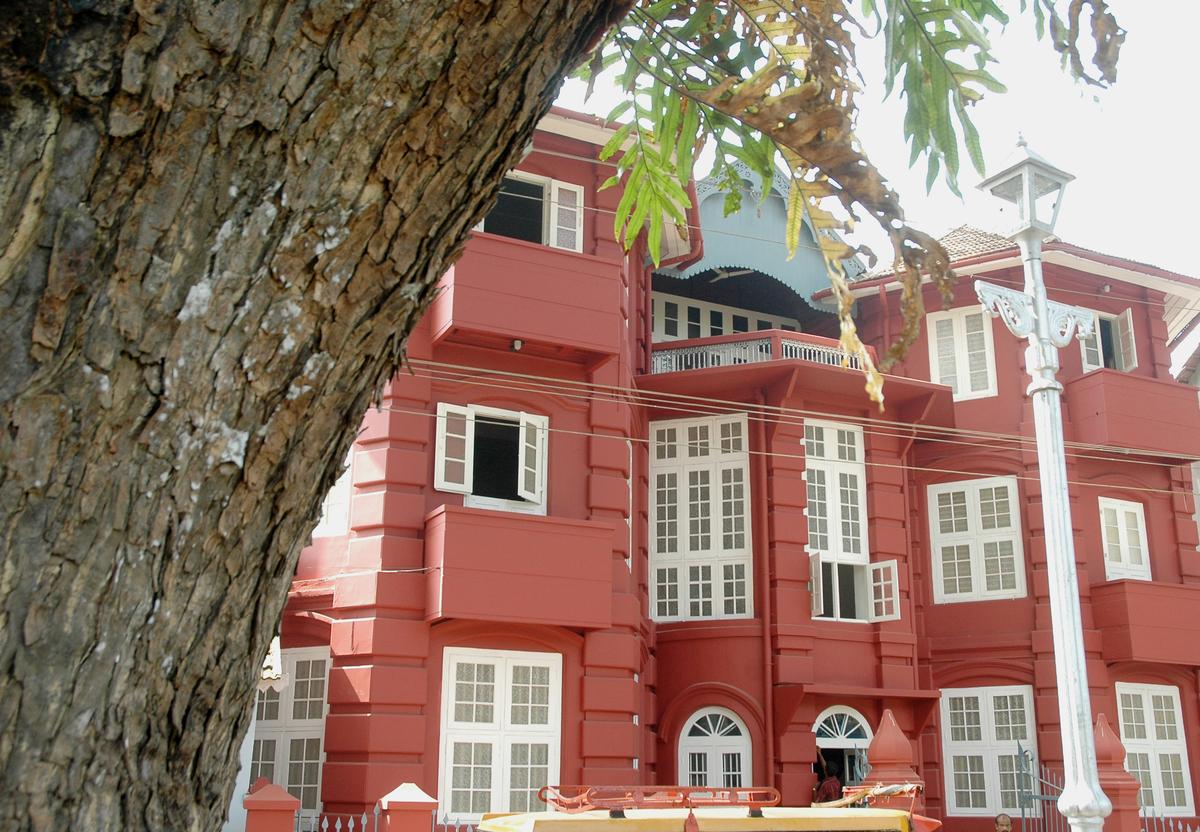
Koder House
| Photo Credit:
VIBHU H
Koder House, 1800s
Fort Kochi’s history is incomplete without mention of its earliest Jewish settlers. Koder House, believed to be built in the 1800s by the Portuguese, was bought and renovated by Samuel S Koder, a prominent Jewish businessman in Kochi, in 1905. Everyone knew Koder House, as the Samuel Koder, threw its doors open to anyone who wanted to learn about the Jewish way of life. These Friday Open Houses were much looked-forward to events on Kochi’s social calendar and the visitors included heads of State, celebrities and ambassadors. The three-floored mansion, built in Indo-European style, is attached to the next building by a bridge across the street. Formerly Koder’s office space, the building is part of the hotel today. It has six deluxe and junior suites designed in different styles and a pool. Try the naked peri peri wings at the restaurant, Plan B.
To make reservations, call 0484-3536683; mail koderhouse@gmail.com
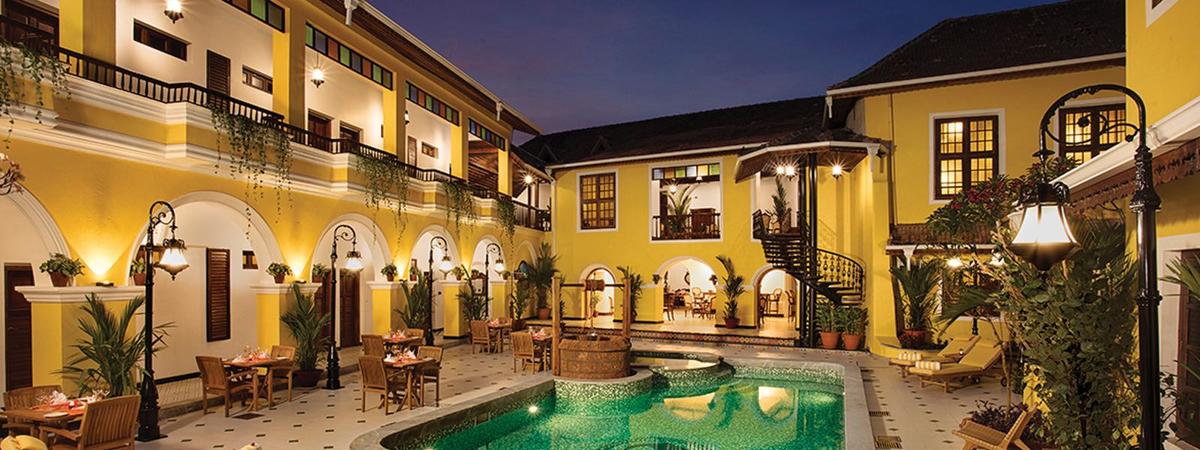
Forte Kochi
| Photo Credit:
Special Arrangement
Forte Kochi, 1860
Once a part of a palatial Jewish home in Fort Kochi, the boutique hotel today is dressed in lemon yellow paint, with gothic windows with stained glass panes. The wooden rafters and pillars are a testament to the number of years it has lived and the lives it has witnessed. Believed to be built by the Dutch, in the 1860s, the architecture and aesthetics of the structure reflect a blend of Portuguese, Dutch, and British influences. Restored to preserve its colonial charm, the courtyard has an ancient Mikwah, a natural spring, used for Jewish rituals. It has been preserved with its sanctity retained.
Owned by The Paul Resorts and Hotels, the luxury heritage hotel is a direct link to Kochi’s fascinating history. The restaurant offers European and Indian cuisines, with a special focus on local seafood specialties. Dig into the special chatti choru (rice and fish curry served in a mud pot) and the seafood platter.
For reservations, contact 8069111111.
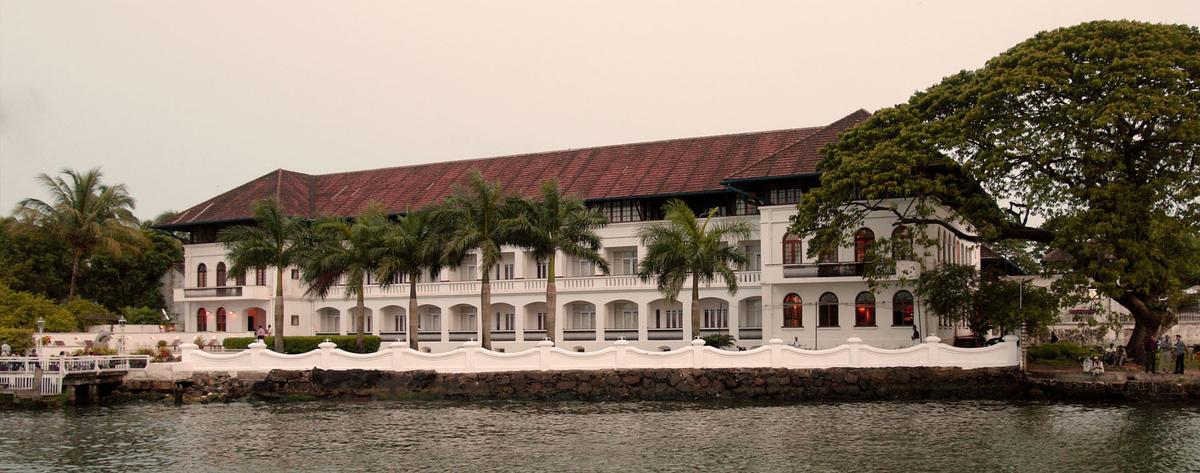
Brunton Boatyard Hotel
| Photo Credit:
Special Arrangement
Brunton Boatyard, 1895
How would it feel to lounge around with a cup of tea in a former boatyard? The Brunton Boatyard Hotel was once a British boat-building yard. Built in 1895 by a British businessman George Brunton, this sprawling mansion reflects a tasteful blend of Portuguese, Dutch and English influences in its architecture. It is said that the wooden boats built here were popular during the British reign. Currently owned by the Cgh group, the five-star heritage hotel has 22 rooms that face the sea, promising stunning views of the water and spectacular sunsets. As an ode to the heritage of Fort Kochi, the restaurant menu includes 32 cuisines from all the communities that have made the region their home. The railway mutton curry, for instance. Try this soupy mutton curry with largish cubes of potato, a unique meeting point of flavours. The recipe is believed to have been developed by the Anglo Indian community of Fort Kochi.
For reservations, call 0484 2846500; or email: bruntonboatyard@cghearth.com
Old Lighthouse Bristow Hotel
| Photo Credit:
Special Arrangement
Old Lighthouse Bristow Hotel, 1927
This British-style heritage building, built by Sir Robert Bristow, a member of the Royal Society of Arts, has a lighthouse mast. The Victorian style building beside the sea was called Bristow House. After the British left India, it was converted into the official residence for port officials and personnel of the Indian Navy and the Air Force. Later, during the 80s, the offices were moved out of the building and it was left to disrepair. In 2006, the Bristow House was given on lease to Suvira Energy, which restored it and rechristened it to Old Lighthouse and Bristow House. The hotel with ancient trees and a colonial charm offers much more than a luxury stay and delicious food – some time for quiet reflection by the sea. The restaurant’s signature sea-food platter includes tiger prawns, medium-sized prawns, squid, crab and a whole grilled fish.
For reservations, call 920 761 0022; mailoldlighthousebristow@gmail.com.
Published – October 27, 2025 03:04 pm IST